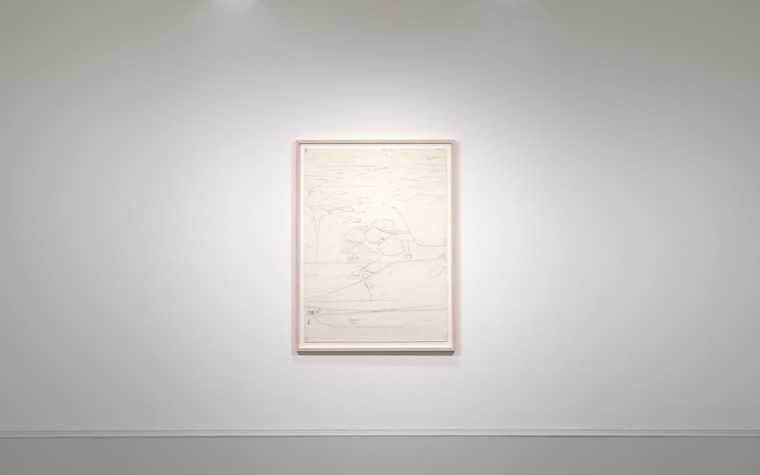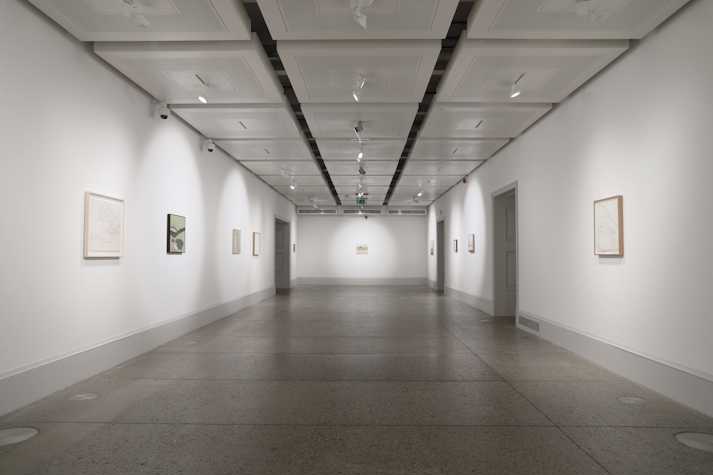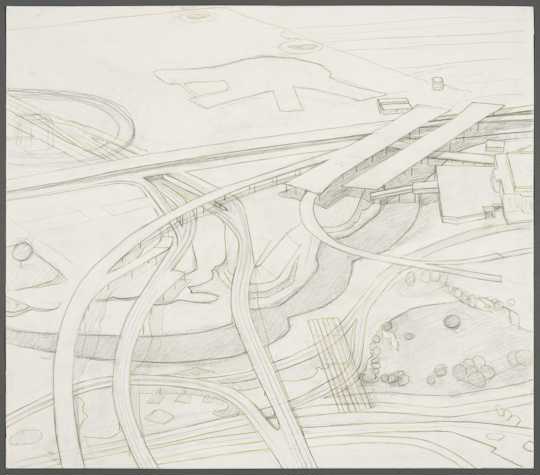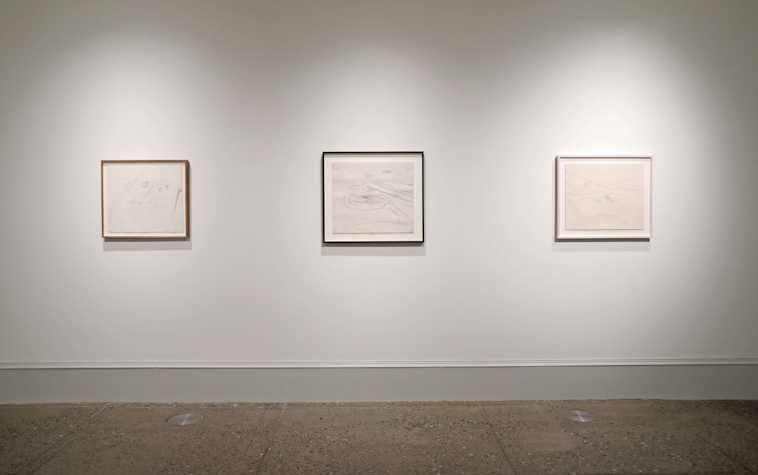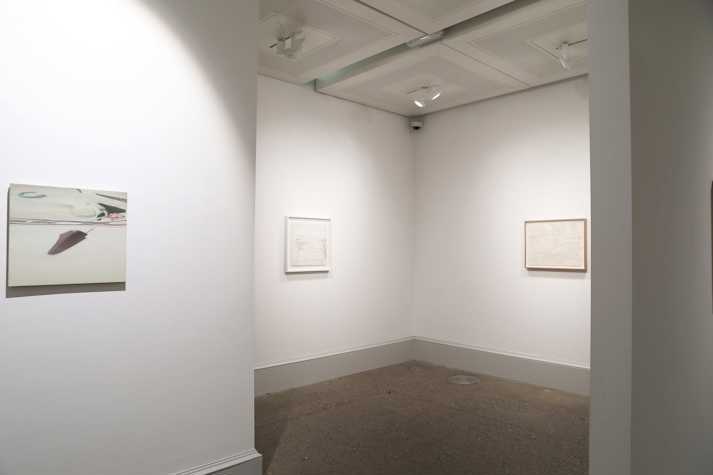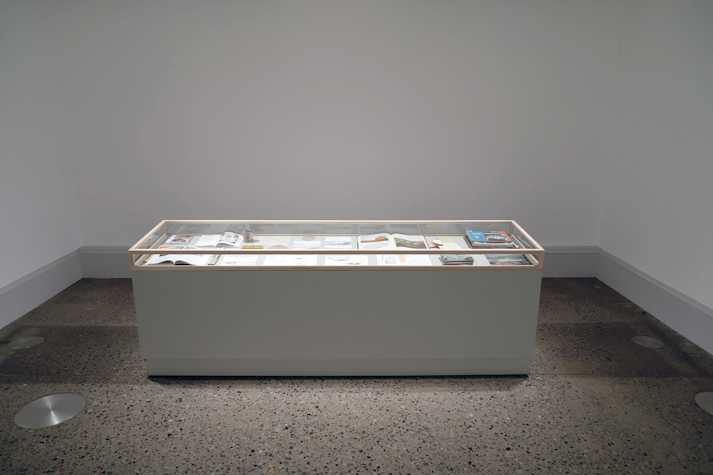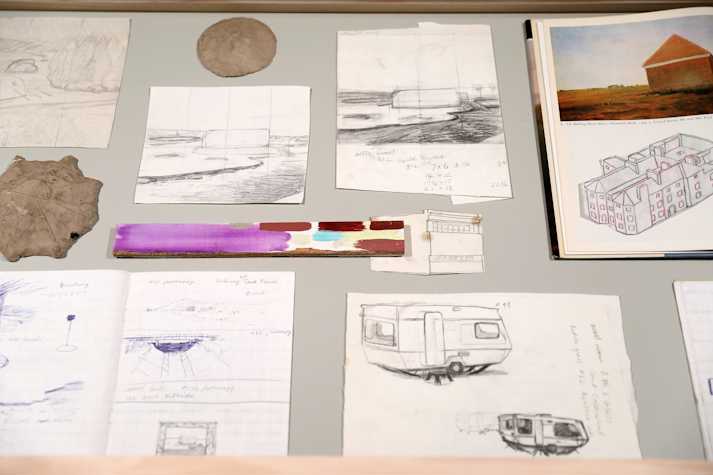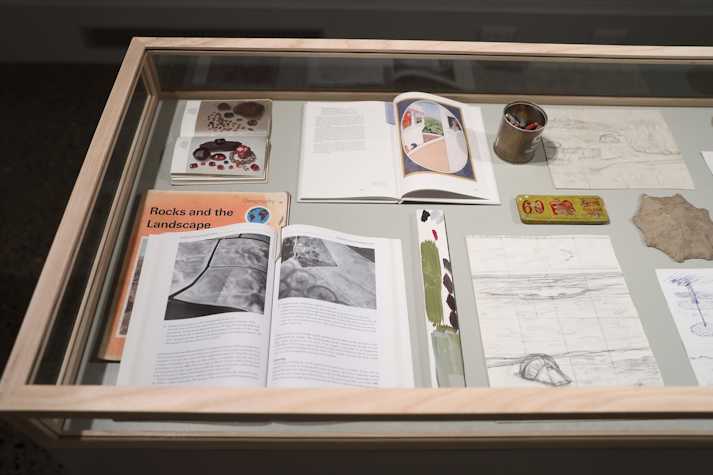See The World
Kelvingrove Art Gallery and Museum
Carol Rhodes (1959 – 2018) was a Glasgow-based artist known for her paintings of partly fictive, human-made landscapes – combinations of the natural and the artificial, suspended between intimacy and estrangement. This first posthumous solo exhibition in Scotland focused on Rhodes’ rarely exhibited drawings alongside key paintings and invited close examination of her artistic processes and preoccupations.
Her works focus on topographic blind spots and peripheries, ‘non-places’ such as service stations, airports, railway depots, development centres, trade parks and brown-field industrial belts. These are environments often associated with the flow of material and labour, storage and distribution, the mining of natural resources, or the deposit of industrial waste and byproduct. Human activity is everywhere, yet human beings themselves do not feature, and the place and state of the psyche is highly ambiguous. Rhodes drew upon various sources, from geography textbooks and environmental surveys to urban planning manuals and her own photographs taken from helicopters and planes. The distance and detachment of the aerial viewpoint is critical: absence and displacement are themes throughout.
Supported by Bridget Riley Art Foundation


